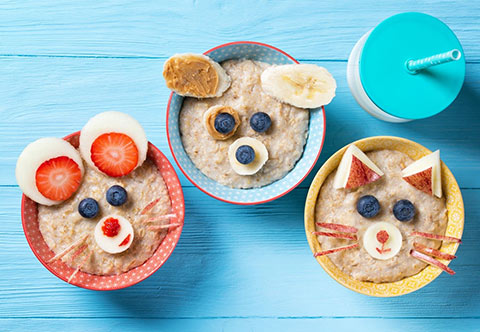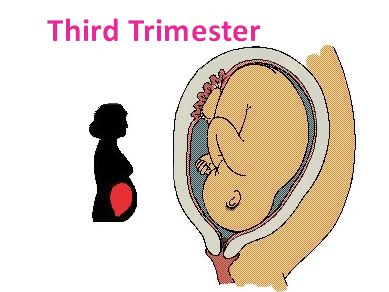Baby feeding
 Feeding your baby is one of the first things you do as a parent. It’s also one of the ways that you develop a relationship with this new family member. When feeding goes well, everyone is happier. The information in this article can help you develop a close feeding relationship with your baby. The skills you learn will also help you and your child avoid food “fights” during the toddler and preschool years.
Feeding your baby is one of the first things you do as a parent. It’s also one of the ways that you develop a relationship with this new family member. When feeding goes well, everyone is happier. The information in this article can help you develop a close feeding relationship with your baby. The skills you learn will also help you and your child avoid food “fights” during the toddler and preschool years.
Getting close to baby
Your relationship with your baby begins as soon as he is born. You communicate with your little one when you hold him as you nurse or bottle feed him. You let him know that you love him by learning what his cries mean and by responding to his needs.
You can never “spoil” an infant by holding him and answering his cries with your attention. The way you handle feeding is an important part of communicating your love to your new baby.
Sharing responsibility
Did you ever think about sharing the responsibility for feeding your baby between the two of you? It may sound strange, but you both have a role to play in feeding!
Parent’s role
What is your role in the feeding relationship? Simply put, you are responsible for offering healthy foods that are appropriate for your child’s age, in a friendly and loving way.
Notice the word we use is offering, not “getting him to eat.” Simply offer nutritious and easy-to-eat food, and let him take it from there. For infants under four months of age, the only food they need is breast milk or iron-fortified infant formula.
Baby’s role
What is your baby’s role in the feeding relationship? Your baby should be given the chance to decide how much he will eat, and even if he will eat at all! After all, who knows best when baby is hungry? He does, of course. And he also knows when he has had enough and wants to stop eating.
It’s so simple when we let baby decide. When your baby cries from hunger, that’s the perfect time to feed him. When he turns his head away and seems uninterested, that’s the perfect time to stop. There’s no need to worry – your baby will let you know when he’s hungry again. Feeding your baby this way may sometimes be inconvenient, but it will not last forever. When your infant becomes a toddler, you will start to plan meal and snack times. But for now, let baby’s hunger be your guide.
Best foods for baby
Baby’s first food is breast milk or iron-fortified infant formula. Either one will provide adequate nutrition for your baby. Breast milk is the perfect food for babies because it’s made just for them! Some advantages of breastfeeding are:
- Has proper nutrient composition.
- Is easy to digest.
- Contains immune factors.
- Is inexpensive.
- Is convenient.
- May help mom lose weight.
- Supports close mother-baby bond.
Infant formula is a good choice for some parents. Family members can feed baby (although expressed breast milk also can be put into a bottle). Some mothers may feel less “tied down” if they bottle-feed. If a mother’s diet is not adequate, or if she uses alcohol or drugs, infant formula is recommended.
Be sure to use only formula that is especially designed for infants, not evaporated milk or soymilk. Follow label directions on the package very carefully.
To help develop the closeness that is so natural when breastfeeding, do the following:
- Hold your baby, securely but not too tightly.
- Look at him and smile.
- Speak softly to him.
- Stop feeding when he turns his head away, cries, or squirms.
- Burp him gently.
- Offer the bottle again after soothing or burping him.
- Don’t leave baby with a bottle propped in her mouth. He needs you holding him as he feeds, to make him feel safe and secure.
Whether you nurse your baby or use infant formula, you can have a close and happy relationship by following the suggestions above.
Keep in mind that the difficult times don’t last forever. But neither do the wonderful times. So most of all enjoy every minute with your new baby — they do grow up so fast!
Guidelines for baby nutrition
Food requirements for infants change a great deal in the first year. At first, your little one’s diet will consist solely of breast milk or formula. But by her first birthday, your child will be eating a wide array of foods. The U.S. Department of Agriculture (UDSA) Child and Adult Care food Program (CACFP) issues the following requirements for infants:
Birth to 3 Months
Breakfast:
- 4-6 fluid ounces of infant formula (iron fortified) or breast milk*
Supplement (Snack):
- 4-6 fluid ounces of infant formula (iron fortified) or breast milk*
Lunch or Supper:
- 4-6 fluid ounces of infant formula (iron fortified) or breast milk*
4 Months to 7 Months
Breakfast:
- 4-8 fluid ounces of infant formula (iron fortified) or breast milk**
- 1-3 tablespoons of infant cereal (iron fortified, dry)(optional)
Supplement (Snack):
- 4-6 fluid ounces of infant formula (iron fortified) or breast milk*
Lunch or Supper:
- 4-8 fluid ounces of infant formula (iron fortified) or breast milk**
- 1-3 tablespoons of infant cereal (iron fortified, dry)(optional)
- 1-3 tablespoons of fruit and/or vegetable (optional)
8 Months to 11 Months
Breakfast:
- 6-8 fluid ounces of infant formula (iron fortified) or breast milk***
- 2-4 tablespoons of infant cereal (iron fortified, dry)(optional)
- 1-4 tablespoons of fruit and/or vegetable (optional)
Supplement:
- 2-4 fluid ounces of infant formula (iron fortified) or breast milk*** or Whole milk or full-strength fruit juice
- 0-1/2 slice of bread or 0-2 crackers (optional)
Lunch or Supper:
- 6-8 fluid ounces of infant formula (iron fortified) or breast milk*** or whole milk
- 2-4 tablespoons of infant cereal (iron fortified, dry) and/or
- 1-4 tablespoons of meat, fish, poultry, egg yolk or
- 1-4 tablespoons of cooked dry beans or peas or
- 1/2-2 ounces of cheese or cottage cheese and/or
- 1-4 tablespoons of vegetable (optional)
* Not reimbursable, but strongly encouraged.
** Reimbursable when optional component(s) is served.
*** Reimbursable when the other components are served.






